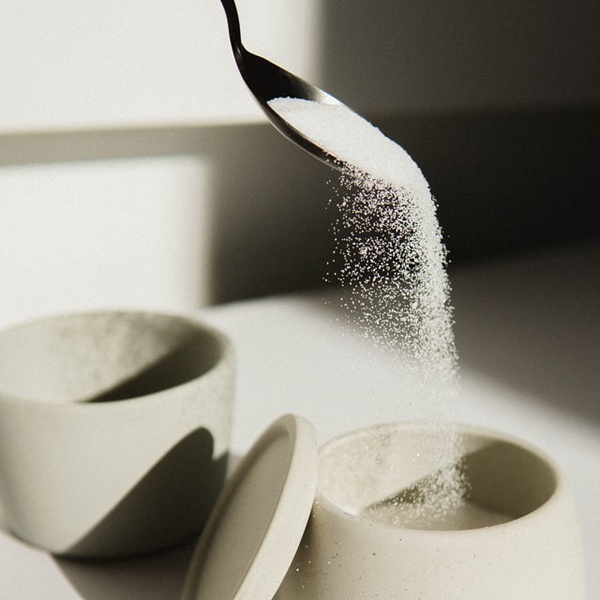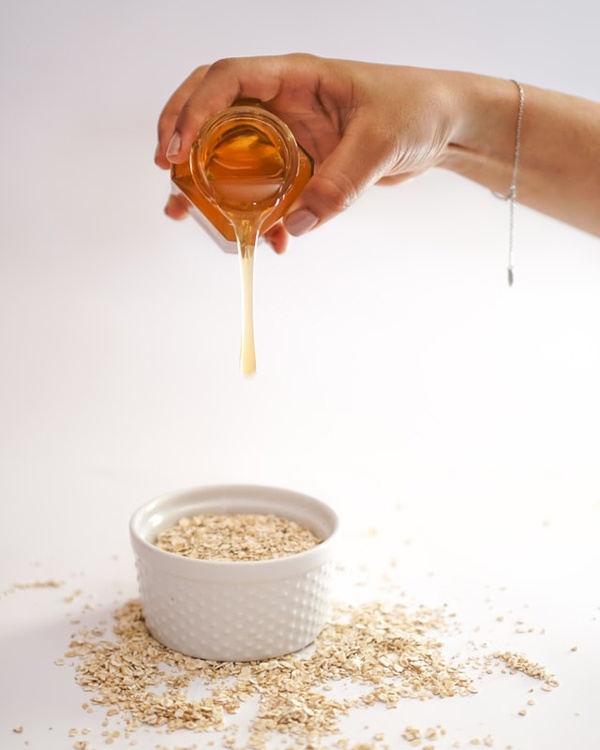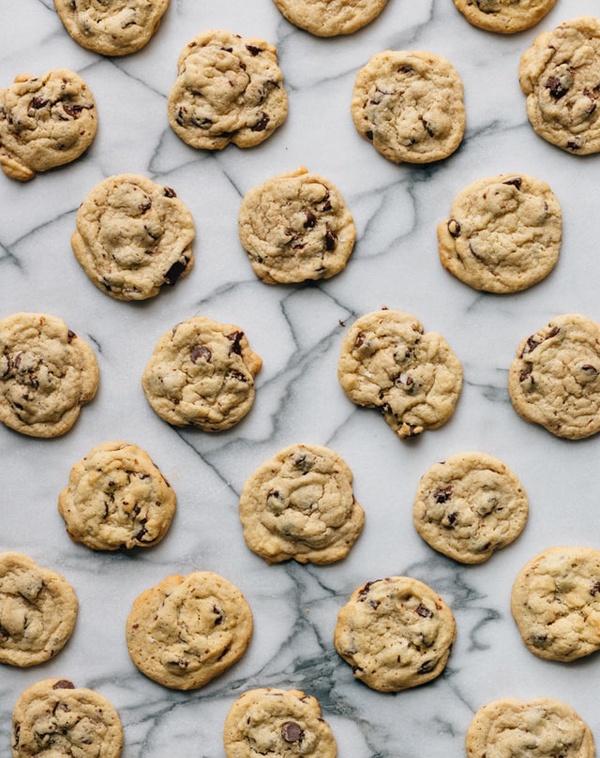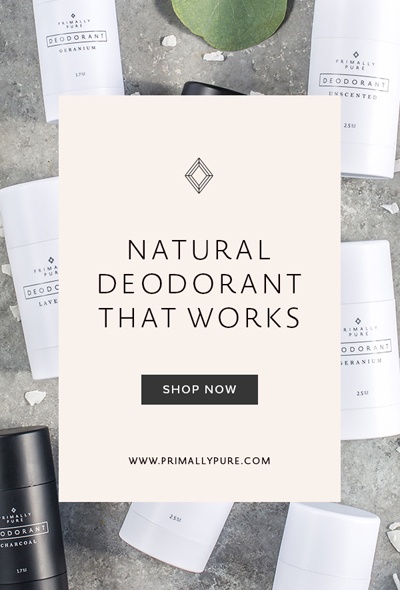The Sweet Truth About Sugar

When focusing on healthier eating and weight loss, the first thing we do is cut sugar. It sounds easy, right? With so many alternatives on the market spouting “sugar-free” and “natural”, it seems so simple to nix that sparkly white substance without giving up too much.
Except it’s not that simple. As a recovering, sometimes relapsing, sugar addict, I have done my homework on sweet swaps and the reasons sugar is as addictive as it is. Sugar and sugar substitutes are a controversial, complex, and often misleading topic. We all know sugar is bad for us. But why? As a mom, how will I know what I should and shouldn’t buy for my kids’ snacks on the go? Labels are confusing as hell! And which sugar alternatives are actually healthy? I’ll give you a hint – not the ones in your daily Coke Zero or kids’ sports drinks!
Let’s start with the sweet basics…
The impact of sugar
We learn to love sugar from a young age. It’s easy to understand why, too. Last Christmas, my daughters and I baked cookies with real sugar (it’s rare I use an alternative around the holidays). The sugar in the bowl enamored my youngest as we rolled the cookies through it. “It’s so pretty!” she said. I agreed because the crystals are pretty. It definitely gave the snowmen cookies the sparkly snow effect we were going for. And I could see the pile of sugar through my 3-year-old’s eyes and understood why she thought it was beautiful. How can something full of sparkles be bad for us?
But here’s the thing about sugar – the more we consume it, the tighter hold it takes on us. There is evidence that our bodies and brains actually become dependent on sugar when we consume it regularly. We experience withdrawal symptoms when we cut it out. Our bodies respond to and get dependent on sugar, just like it does drugs and alcohol. It’s nuts, right?!
Obviously, sugar is not a hard drug. We all know sugar turns to fat, which leads to weight gain, but is that the end of the world? Well, maybe. Too much sugar can have a detrimental impact on our health, possibly contributing to serious illness or death.
A high-sugar diet may lead to:
- Cardiovascular disease
- Obesity
- Type II diabetes
- Certain types of cancers
- Inflammation of the body
- Acne
- Premature lines and wrinkles
- Early-onset dementia
It’s no joke, people. Too much sugar is not good for our health.
But what about those chemical-ridden sugar substitutes? They aren’t any better. In fact, some of them are much worse for you than plain old cane sugar.

Sugar alternatives to steer clear of
Despite clever marketing, many of the alternatives on the market are composed of chemicals (some from “natural” sources) surrounded by cancer controversy. And others are basically table sugar with another name – they affect our glucose levels the same way. There is some evidence to suggest increased weight gain with the use of some alternatives, too. When making the choice between the sugar substitutes below and sugar, I’d choose the real thing.
High fructose corn syrup – Like sugar, high fructose corn syrup (HFCS) contains glucose and fructose. But HFCS contains more fructose than sugar does, and our bodies struggle to break it down. Over time, this may lead to long-term health issues. With a huge jump in foods made with HFCS over the last 30 years, it’s easy to eat a vast amount in a short time period. Too easy. Dieticians and food scientists believe there may be a link between the increase in American obesity, certain types of cancers, and HFCS.
Sucralose – Often disguised as Splenda, soft drink companies use sucralose to give sweetness to their diet and zero sodas. It’s derived from sugar, making it easy to pass off as one of the less offensive alternatives, but it comes with a host of other issues. Studies, like the one by a clinic in Cleveland, show that sucralose causes inflammation in the body and affects microbiome balance in the digestive tract. We need a balanced microbiome to be in optimal health, so it’s best to avoid all the sodas, yogurts, and other processed foods made with sucralose.
Aspartame – Aka Equal or NutraSweet, aspartame is another zero-calorie soda and “diet” food sweetener that may do more harm than good for your weight loss goals. Several studies prove regular consumption of aspartame may cause neurophysiological issues. Fortunately, with the bad rap aspartame has received over the last decade, you’re seeing fewer products made with it. Diet Coke drinkers, be warned, Coca-Cola decided to keep using it in most of their diet soft drinks.
Maltodextrin – Maltodextrin is a common food additive made from corn used to replace sugar, bind ingredients, and preserve taste. It’s one of the key ingredients in sports drinks, like Gatorade, that kids drink regularly because misleading marketing makes parents think it’s better than soda. Manufacturers also sneak it into daily staples like pasta, condiments, meat alternatives, and store-bought baked goods. It is literally in everything. The primary concern with maltodextrin is the way it spikes glucose levels, decreases the body’s good gut bacteria, and causes increased inflammation. Companies use it in their products because it’s cheap. But you know what isn’t cheap? The medical bills you could end up paying with poor health down the road.

Sugar swaps to try instead
When baking or cooking at home, try swapping whtie cane sugar for some of the natural alternatives that contain some nutritional value. And when you’re ready to up your game, there are low-glycemic index options favored by those who live by keto and low-carb diets. They’re a little trickier to work with, but are well worth the trouble if you want the sweet without the blood sugar spike.
Local honey – Although neck to neck with sugar as far as carbohydrates go, honey is an excellent way to ease into the world of sugar substitutes. It has a slightly lower glycemic index than sugar. And when you choose raw local honey, you get some nutritional value because of the enzymes, antioxidants, and traces of vitamins it contains. Honey is healing – it’s an anti-inflammatory and may also help ease seasonal allergies. When using honey as a sugar substitute, you can usually use slightly less than you would granular sugar. I think I go three-quarters of a cup to each cup in a recipe. My family actually prefers the flavor of my banana bread made with honey over the times I use sugar. And I feel less guilty making it as often as I do when I use local honey.
Pure maple syrup – If you’re going for a more natural form of sugar and carbs aren’t a focus, pure maple syrup is one of my go-to’s. It has an amazing flavor for adding to plain Greek yogurt and berries or as a sugar replacement in cookies. And like honey, maple syrup is chock full of antioxidants compared to zero in sugar. Keep in mind, pure or not, maple syrup is very high in sugar, so be careful not to go overboard. It’s sweeter than sugar, so you can go lighter in the conversion when using it as a baking replacement.
Date syrup – Made from a fruit full of fiber, nutrients, and antioxidants (if you haven’t caught on, I love antioxidants!), date syrup is possibly one of the healthiest sugar replacements. Because of the potassium, date syrup absorbs slower into the bloodstream, making it lower on the glycemic index scale. Compared to honey and maple syrup, date syrup may actually aid in weight loss goals. I haven’t tried it as much in recipes yet, but I’m impressed with the nutritional components it adds to recipes. Date syrup has a more distinct taste than honey or maple syrup, so I recommend starting with a third less than you’d add of sugar. You hardly notice the flavor in breads, brownies, and chocolate-based cookies.
Xylitol – Xylitol is a naturally occurring alcohol found in most plant materials, including many fruits, vegetables, and plants… It’s extracted from birch wood to make medicine. I like xylitol because it has a sweetness very close to sugar, has a low glycemic index, and is good for our teeth. My dentist has promoted chewing gum with xylitol after meals to avoid cavities. According to medical research, using xylitol as a sugar substitute may help keep bacteria and free radicals at bay, too. When allowing your little one’s gums, mints, and candy, look for options made with xylitol – one study shows it may actually decrease the risk of ear infections in children.
Swerve – A zero-cal fave of my keto friends, Swerve is made with erythritol, a sugar alcohol made from fermenting sweet and natural fruits, like pears and melons. It doesn’t raise your blood sugar, which makes it an ideal alternative for those concerned about glucose spikes and weight loss. When used in baking, Swerve imitates sugar in the way it holds its shape in recipes and caramelizes when heated.
Stevia – Probably the most popular of all the healthier sugar subs, Stevia is a plant-based sweetener derived from the leaves of a South American shrub. An acquaintance of mine is diabetic and tries to stick to foods made with Stevia as much as possible. There’s evidence that the natural sweetener lowers insulin levels, blood sugar, and even blood pressure. Because it’s about 300 times sweeter than sugar, be careful when using Stevia in recipes. You definitely don’t want to use a 1:1 ratio! I recommend using the liquid Stevia over the powdered. Both have a unique taste different from sugar – it’s almost bitter – but it’s less noticeable in the liquid version.
Monk fruit extract – This natural sweetener has been used in Chinese medicine for centuries, but it’s recently taken the sugar alternative world by storm. It’s a complicated substitute to work with because of its intense flavor, but it’s ideal for weight loss since it has zero calories. Monk fruit also contains antioxidants and anti-inflammatory properties. When buying monk fruit sweetener or extract, read the labels carefully to make sure it isn’t mixed with one of the alternatives you should avoid. Manufacturers dull the flavor by mixing it with erythritol (a good one!), Splenda (an iffy one), or inulin (I didn’t mention this one but it may cause digestive issues). If you decide you’re ready to experiment with monk fruit, go slowly. I do half and half with liquid Stevia to counter the bitter taste.
Learn to read labels
If you’ve taken any of my mentoring sessions, you know how much I stress the importance of reading ingredient labels over nutritional facts. But what about the mystery ingredients we can’t pronounce? Thankfully, our phones come to the rescue and make it super easy to do a quick search on these confusing ingredients.
If you haven’t been taking the time to check labels, start now to avoid hidden sugars. According to John Hopkins Medicine, Americans consume almost half a cup of hidden sugar a day. Manufacturers have gotten sneaky about how they include the various sugars on labels. So even if you’re passing on the baked goods and candy, you may still get way more sugar in a day than you intend.
When grocery shopping, skim nutritional content for a few things:
- Ingredients that end with “ose.” This should cover all the fructose, glucose, maltose, dextrose, sucrose.
- The names for other forms of sugar, like molasses, nectar, evaporated cane juice, fruit juice concentrates, etc.
- The total grams of sugar. The American Heart Association recommends men get no more than 38 grams of sugar per day. Women and children should limit their sugar intake to 25 grams a day.
With summer and plenty of activities in full swing, I’m sure many of you mamas are relying on on-the-go snacks for your littles. I know my sanity relies on my youngest having a snack so I can actually help coach her big sisters’ games. None of us have the time to do an in-depth study of each label because we’d be in the grocery store forever. But learning the label shortcuts will save you time without adding all the extra sugars our bodies just don’t need.

Avoid sugar and alternatives as much as you can.
To truly live your healthiest life, skip added sweetners as much as you can. I’m not keto but I believe mindfully eating high-fiber foods with fewer carbs is one of the healthier ways to live. With less sugar, your digestive tract will run smoother, your skin will be clearer, and you’ll probably lose a few pounds. You may even find you have fewer energy slumps, which means you might get more done in your day! Keep in mind, your body needs some sugar but stick to natural forms like what you get in fruit as much as possible.
Don’t drive yourself crazy over sugar.
There are going to be days where you feed your kids too much sugar. Days where you can’t keep your hands out of the candy jar at work. I know I dip into the candy from time to time when I’m walking back to my desk. Sometimes that happens two or three times in one day. When the guilt kicks in, what can I do to undo it? Nothing! The best way to kick that guilt is to appreciate what you have already enjoyed, drink more water, and try to be stronger the next time. Having a meal plan for meals can help keep you mindful of how much sugar you are consuming for dinners. Check out my free sanity savor meal planning guide to get started with this habit
The important thing is, don’t beat yourself up over it. Don’t aim for perfection. That mindset sets you up for failure. Sugar is a powerful substance that can be hard to resist. And it doesn’t help that pretty much everything has sugar in it. And if not sugar, there’s a strong possibility it’s one alternative to avoid. Like with everything, moderation is key.
Be mindful. But enjoy life.

By Category
Don't Miss Out!
Sign up to get Mental Edits delivered to your inbox
Primally Pure
Recently on the

blog
My Awakening Journey could be an Inspiration for You!!
Why is it Important to Read Food Labels Before Buying Them?
Chiropractor Care for Gut Health
Soak in more memories during mealtime
Snag My Meal Planner Sanity Saver
Expand your time & your sanity with your family using a simple guide to plan out your meals. Using my foolproof steps to guide you through writing out a weekly menu building in meals that fuels you and your family, reduce your weeknight stress, and build a grocery list within minutes. Check, check!




